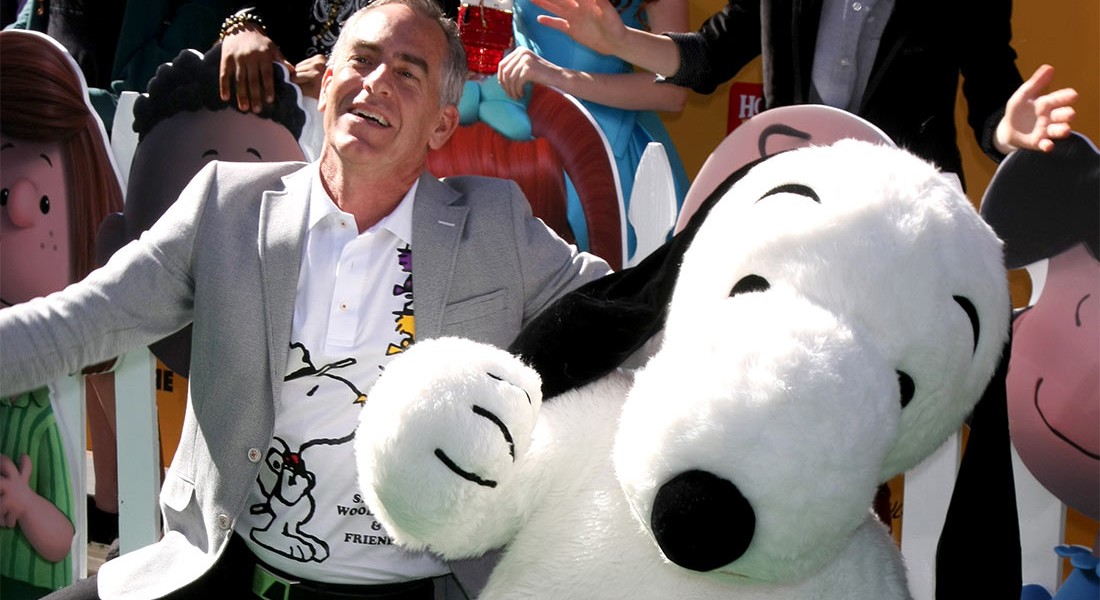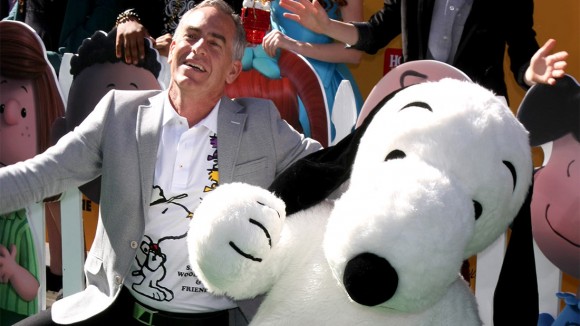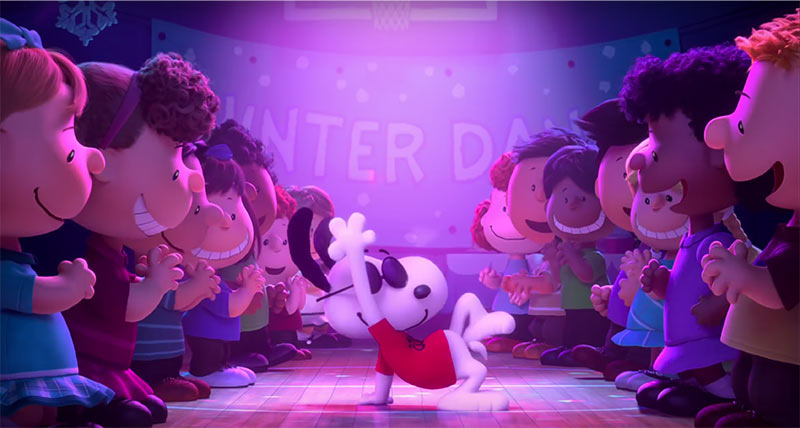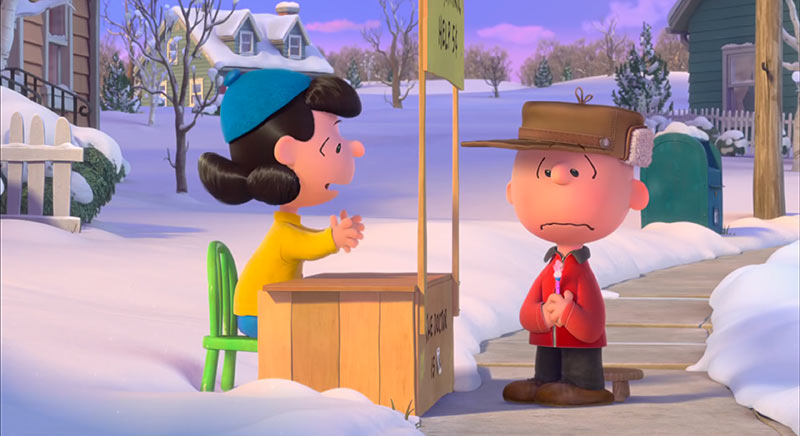

Rebooting Charlie Brown With ‘The Peanuts Movie’ Director Steve Martino
With decades of cultural influence and capital beneath its hand-drawn belt, and the 50th anniversary of television’s foundational A Charlie Brown Christmas cartoon knocking at the door, Charles Schulz’s beloved Peanuts comic strip has nothing left to prove.
However, the same cannot be said of The Peanuts Movie, Blue Sky Studios and director Steve Martino’s respectful, rewarding CGI feature. Endorsed and co-written by Schulz’s son and grandson, Craig and Bryan, The Peanuts Movie has become a critical and commercial success, as well as an Oscar entrant for best animated film of the year. Which is a quite refreshing result, considering how it could very well have come off instead like an existing property cash grab.
But this is not the case with Martino’s deft mixture of Schulz’s comic strips — whose 2D lines were literally extrapolated into 3D models manipulated by a team of animators — and the Bill Melendez-directed animatemd projects like A Charlie Brown Christmas and You’re in Love, Charlie Brown, which are heavily quoted in Blue Sky’s full-length revival. I spoke with the pleasantly surprised Martino (pictured above) by phone about The Peanuts Movie’s pressurized production, merging the worlds of 2D and 3D animation, and why a Charlie Brown who is actually noticed and praised by the Little Red-Haired Girl who has captivated him isn’t much of a stretch for Schulz old-schoolers and new adopters.
Cartoon Brew: Congratulations, you’ve created a faithful and reverent Peanuts film. How do you feel about its reception so far?
Steve Martino: All the days are running together for me. I’ve been so happy that people have been responding in a positive way. I happened to be at a screening event last night back home with my friends, family, and neighborhood crowd, and it was amazing to have grown men come up and tell me they were moved to tears at the end. To hear how much so many of them, who have been fans for decades, still felt connected to Schulz’s characters. I couldn’t feel better about the way the film has been perceived.
Perception seemed tricky, given that you made a CGI film anchored in the hand-drawn restraint of Schulz’s comic strip.
Steve Martino: It was an absolute intersection of ideas, which first came to me back when I was standing in the Charles Schulz Museum, at the desk where Schulz drew his strips. One idea was based on a conversation I had with people there about how Schulz really understood his comic format, which is much different than our feature film’s large canvas. I felt that we could create a bigger, richer theatrical experience using computer animation, which is our paint brush today, but with the same charm and style that Peanuts had. At the same time, I’m in the museum watching a video of Schulz draw his characters with such efficiency, [and] I actually studied Schulz when I was a young animator. Schulz drew with such expression, which I also wanted to bring into the film. So the question was how to merge these two worlds.

I read that your animators were manipulating 3D models literally created from Schulz’s 2D lines.
Steve Martino: At Blue Sky, I thankfully have such a wonderful team of not just passionate animators — who wanted to work in a different way than we have on other films, and approach the process more like 2D film — but also production managers and producers who, when we first started this journey, were in uncharted territory. They could very easily have panicked six months into the process, as we were figuring it out, and said, “No, let’s just do it the way we always do it.” But they’re also fans of Peanuts, so they were supportive of the movie’s vision. They gave plenty of room to our animators, including Nick Bruno, Scott Farrell, and Jeff Gabor, who was the lead on Snoopy and really showed, by example, how to crack the code for working in a more 2D mindset while manipulating 3D objects. We weren’t using computer animation’s traditional motion blur, because we were animating on 2s and holding frames longer for emphasis, snap and timing. We threw out our normal processes, including for fabric simulation. It was all in the hands of the animators, who would take a model, like Snoopy’s face, and distort its geometry to create a smear frame, or add four eyes to give it a sense of blur. It was just a different way of thinking, and man, was it an exciting way to work for our animators. It was so unusual for us.
One change I did notice is that Schulz’s usual, for lack of a better term, cruelty was toned down.
Steve Martino: During conversations I had with Craig and Bryan Schulz, and the rest of our production and writing teams, we stood back and looked at Charlie Brown as a whole. After 50 years of comic strips, of course we remembered his tragicomic failures. But we also found strips with Charlie Brown and his sister, Sally, where she’s pestering him to write letters to Santa Claus or something else, where you could see his patience and kindness. Sure, Charlie Brown failed, a lot, but he also picked himself back up and tried again. So we decided to shine a light on all sides of him.
Charlie Brown had it rough in some of those strips and shows.
Steve Martino: Yeah, Charles Schulz always felt that failure was a lot funnier than success. But in particular, as we got to the end of our film, which is its heart, we wanted to show that Charlie Brown also had qualities that we often overlooked. And to me, this is why Schulz’s Peanuts still resonate today, when I see even my daughters strive to achieve, and hold themselves, to a barometer of success. Who is the best, who is the winner? Children today still feel that if they don’t achieve that status, then their lives aren’t successful. We still lose sight of the importance of how we interact with people, with kindness and honesty. Picking ourselves up after failures and trying again are the real qualities that make us winners. Charlie Brown allowed us to express that.
Speaking of, the film is a critical and commercial success.
Steve Martino: As a filmmaker, it’s especially satisfying to see people respond positively to this film. When I started this journey, I figured half of the audience was going to be diehard fans, lined up and ready to go, “I don’t know, computer animation?” So to see audiences embracing the film makes me really proud of the work that my team put in to get us over that hump.

The Peanuts Movie is also up for consideration as an Oscar.
Steve Martino: To be able to sit on a roundtable with filmmakers I really admire, like Inside Out’s Pete Docter and Shaun the Sheep Movie’s Richard Starzak, is icing on the cake. We’re in a little fraternity; even though we work in different studios, we sometimes understand each other’s lives more than anyone else. So to have The Peanuts Movie talked about within the same spectrum of their films, and to share stories with them about our journeys over the last few years, is quite an honor.
I think The Peanuts Movie has a good shot. What’s it like to hear someone wish you luck at the Oscars?
Steve Martino: [Laughs] To be perfectly honest, it is such a weird thing to hear. I live in New York, but I travel out to Los Angeles every Christmas, which is around the time you start seeing stuff about the Oscars appear in magazines and newspapers. And you know, I’d be a liar if, as a filmmaker, I didn’t say, “Boy, someday I’d love to be in that small circle.” It’s just nice to be in the conversation.
I spoke with Richard about Shaun the Sheep Movie’s lack of cynicism, which is very important to him. It was nice to see that The Peanuts Movie also steered clear of it.
Steve Martino: Personally, I enjoy films like that. One of the things that is meaningful to me is that The Peanuts Movie is a story of day-to-day life. It doesn’t have aliens or villains who are going to destroy the Earth, although I’ve worked on movies that have those classic things. To be able to make a film about everyday living, which can have moments that feel like life and death, was really refreshing. Historically, there is a tone to Schulz’s Peanuts that we wanted to honor as well, which is that you don’t go for the low-hanging fruit. The Peanuts Movie was all about finding a different way. I saw that in Shaun the Sheep as well. I love films like that.
(Photo: Helga Esteb/Shutterstock.com)

.png)